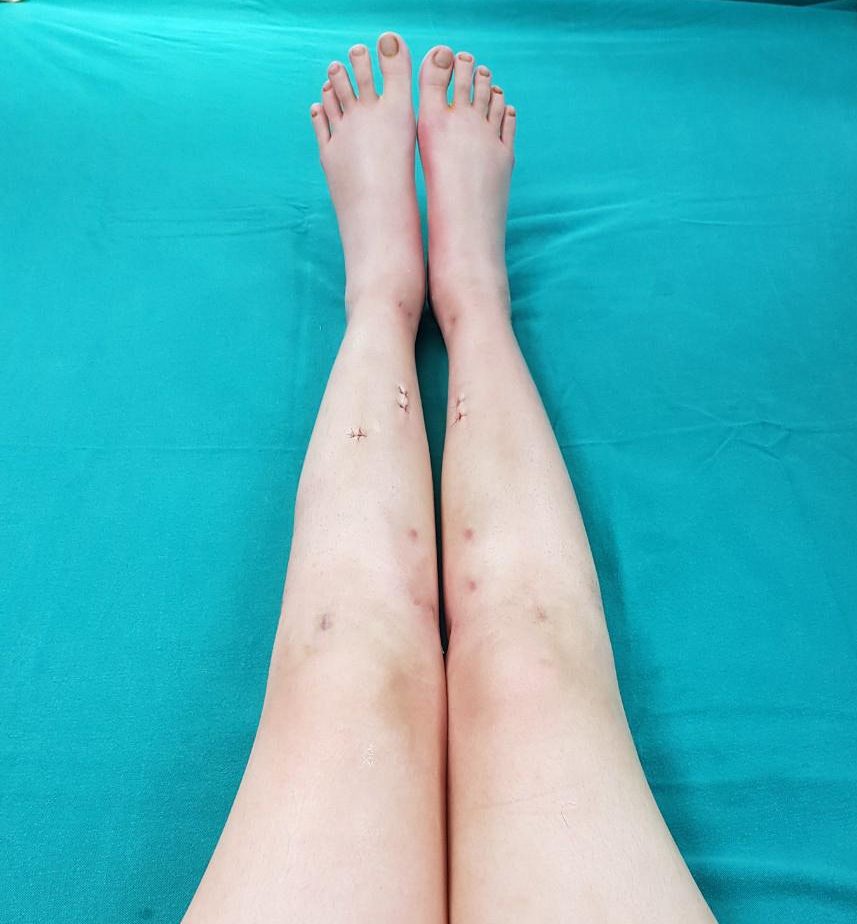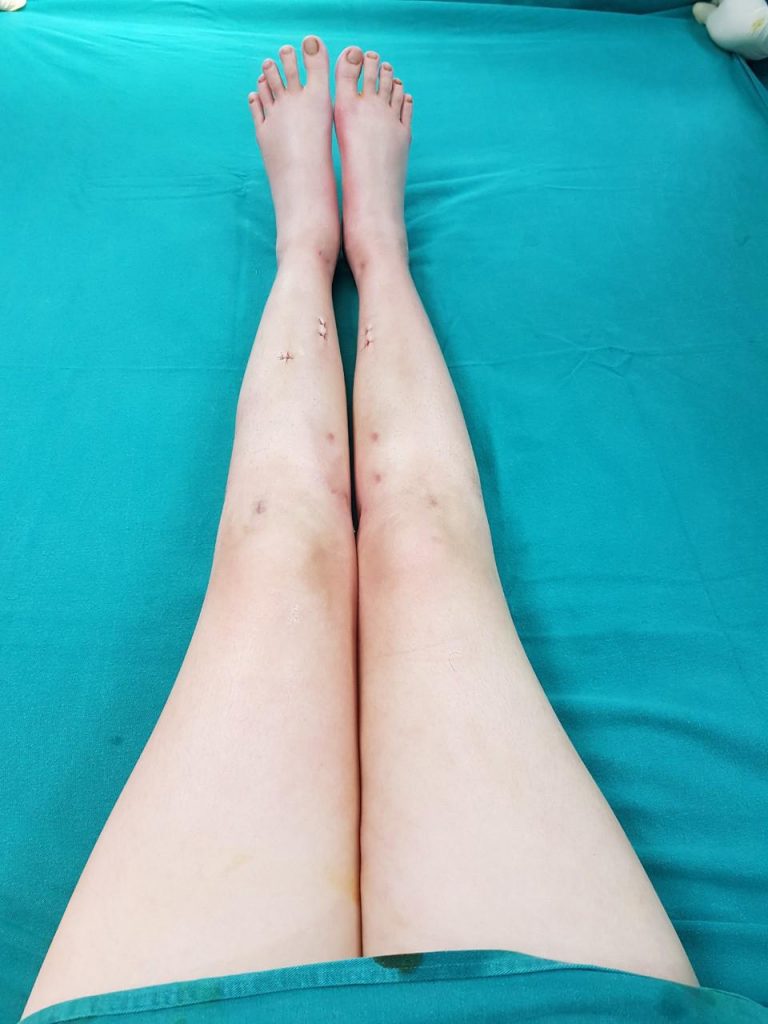
Differences between leg lengthening at the tibia and femur
The thigh and lower leg are two positions that doctors can choose to perform leg lengthening. However, they would prefer the lower leg over the thigh for leg lengthening procedures due to the following reasons:
Femoral lengthening characteristics
When performing leg lengthening using external fixation combined with intramedullary nailing to create healthy bone cavity, the average healing rate is between 35 and 45 days per cm. Patients are able to get their external fixation removed early, minimize their chance of getting complications after the external fixation is removed and improve the result of their rehabilitation exercises.
Despite this, there are some common complications when performing femoral lengthening using external fixation such as:
- Limiting knee flexion and hip joint extension.
- High risk of deep infection in patients with history of open bone fracture, osteomyelitis, or because the Schan and Kirschner pins got caught in the intramedullary nail.
The two aforementioned complications are acute as they can affect the result of the surgery.
In addition, there are several disadvantages:
- The external fixation is bulky and cumbersome, greatly affecting daily activities.
- Surgery scars are longer. The procedure leaves more scars and they are uglier due to the pins from the fixation piercing through the muscles. During the lengthening, muscle and skin often get torn.
- The patient is likely suffer from pin site infection due to the pins piercing through huge muscle bulks in the thigh.
- When carrying the fixation, it is more difficult to practice moving the knee joints, leading to inconveniences to daily life.
For the tibia, the ring external fixator will be often used with 4 Kirschner pins that are 1.8mm long. These pins are pierced through both ends of the tibia and they are nowhere near the external fixation. The installation of the eternal fixator in the femur is more complicated than that in the tibia.
Tibial lengthening characteristics
Tibial lengthening helps making the legs look longer than if the procedure is performed in the femur. This is because it is easy to observe the position of the knees and toes, but it is difficult to observe the position of the hip joint. Moreover, when we wear our belts in a high position, our hip joint position seems to look higher. When this happens, as people look at our long legs, they will think that the other part of our bodies is at normal proportion and have the impression we are tall. In addition, wearing skirts will show the length of our lower legs, not our thighs.
Technically, tibial lengthening can be performed through one single surgery at a reasonable time. Femur lengthening would require two steps in preparing and performing the procedure in one surgery or two separate surgeries would increase operative time and costs. In addition, tibial lengthening causes less blood loss than femoral lengthening.
Tibial lengthening is easier as carrying two external fixators in the lower legs is more comfortable than carrying them in the thighs.
Femur has mal-aligned mechanical and anatomical axes, therefore tibial lengthening will be more psychologically suitable than femoral lengthening.
Moreover, for tibial lengthening: The number of scars is smaller. The scars are smaller and less unsightly. There is a lesser risk of getting pin site infection and it is easier to practice rehabilitation exercise during the fixation.
Therefore, when performing leg lengthening procedure to improve height, the prioritized position to perform the lengthening is the two lower legs.


